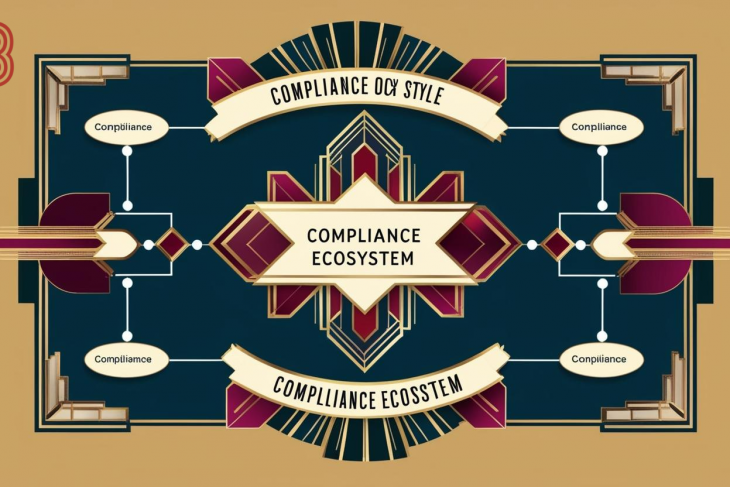
Introduction
In an era defined by digital transformation, organizations face heightened scrutiny from regulators, customers, and the public. The convergence of cyber risk, data privacy concerns, and a rapidly evolving regulatory landscape has made compliance more critical than ever. One area where risk management intersects heavily with regulatory oversight is in email and digital communications—specifically, compliance with spam regulations. These regulations are designed to protect consumers from unwanted, deceptive, or harmful communications while ensuring businesses operate within ethical and legal boundaries.
Understanding Spam in the Regulatory Context
Defining Spam
Spam typically refers to unsolicited bulk messages, primarily sent via email, though the term has expanded to include SMS, instant messaging, and social media. The primary objective of spam is usually commercial—promoting products or services without the recipient’s consent. However, spam can also serve as a vector for more malicious activities such as phishing, malware distribution, or scams.
The Compliance Lens
From a compliance perspective, spam is not merely a nuisance; it’s a legal and reputational liability. Organizations that violate spam laws risk hefty fines, loss of customer trust, and damage to brand reputation. Therefore, managing spam-related risks must become a key component of enterprise-wide compliance frameworks.
Major Spam Regulations Worldwide
CAN-SPAM Act (United States)
The Controlling the Assault of Non-Solicited Pornography and Marketing (CAN-SPAM) Act of 2003 sets rules for commercial email, establishes requirements for commercial messages, gives recipients the right to stop receiving emails, and spells out tough penalties for violations. Key provisions include:
No false or misleading header information
No deceptive subject lines
Clear identification of the message as an advertisement
Inclusion of the sender’s physical postal address
Opt-out mechanism
GDPR and ePrivacy Directive (European Union)
While the General Data Protection Regulation (GDPR) is primarily about data protection and privacy, it has profound implications for digital communications. The ePrivacy Directive, also known as the “Cookie Law,” directly regulates unsolicited electronic communications. Under GDPR:
Consent must be freely given, specific, informed, and unambiguous
Organizations must maintain a record of consent
Individuals have the right to withdraw consent at any time
CASL (Canada’s Anti-Spam Legislation)
Canada’s CASL, enacted in 2014, is one of the most stringent anti-spam laws globally. It applies to all electronic messages (email, SMS, instant messaging) that promote a product, service, or business interest. Key features include:
Express consent requirement
Clearly identified sender information
Functional unsubscribe mechanism
Record-keeping obligations
Australian Spam Act 2003
Australia’s legislation emphasizes similar principles:
Prior consent (express or inferred)
Clear sender identification
Opt-out option
Violators can face significant fines, particularly for repeated or egregious offenses.
Risk Implications of Non-Compliance
Legal and Financial Risk
Non-compliance with spam regulations can result in substantial financial penalties. For instance, the Canadian Radio-television and Telecommunications Commission (CRTC) has issued fines exceeding CAD $1 million for CASL violations. Similarly, the FTC and state attorneys general in the U.S. enforce CAN-SPAM aggressively.
Reputational Risk
Even a single publicized incident of spam regulation violation can lead to reputational damage. Customers may view the organization as unethical or technologically negligent, affecting sales and long-term loyalty.
Operational Risk
Operational disruptions may arise from regulatory investigations, litigation, or forced cessation of communication campaigns. Additionally, being blacklisted by email providers can severely impair digital operations.
Integrating Compliance with Risk Management Frameworks
Compliance Risk Assessments
Risk management begins with identifying and assessing risks. Organizations must incorporate spam compliance into broader compliance risk assessments. This includes mapping out all digital communication channels, understanding where consent is gathered, and evaluating how unsubscribe mechanisms are implemented.
Policies and Procedures
Documented policies and procedures are essential for ensuring regulatory compliance. These should cover:
Consent acquisition and record-keeping
Email marketing practices
Periodic audits of communication strategies
Procedures for responding to complaints or regulatory inquiries
Internal Controls
Internal controls serve as the backbone of compliance. Controls specific to spam regulations may include:
Validation scripts for consent checkboxes
Automated opt-out systems
Content scanning tools to detect deceptive language
Monitoring tools for email deliverability and complaint rates
Technology and Automation in Compliance
Consent Management Platforms (CMPs)
CMPs can help organizations obtain, store, and manage user consents in compliance with spam regulations and data protection laws. These platforms often include features like customizable consent banners, audit logs, and integrations with CRM systems.
Email Verification and Hygiene
Maintaining a clean mailing list helps reduce spam complaints and ensures communication only reaches intended recipients. Email hygiene tools verify addresses, detect bots or spam traps, and flag high-risk domains.
Artificial Intelligence
AI can enhance compliance by analyzing communication patterns and detecting potentially non-compliant messages before they’re sent. Machine learning algorithms can be trained to recognize risk indicators such as misleading subject lines or excessive promotional content.
Training and Awareness
Employee Training Programs
All staff involved in marketing, sales, IT, and compliance should receive training on spam laws relevant to their jurisdiction. Training topics may include:
Difference between express and implied consent
How to handle unsubscribe requests
Avoiding deceptive practices in marketing
Executive Oversight
Executives and board members must understand the strategic implications of spam compliance. Their support is critical for funding initiatives, ensuring accountability, and fostering a compliance-focused culture.
Auditing and Continuous Monitoring
Regular Compliance Audits
Audits help detect and correct non-compliant practices. Internal audits should review:
Consent records
Email campaign content
Functionality of opt-out mechanisms
Third-party audits can provide additional assurance and objectivity.
Key Performance Indicators (KPIs)
Organizations should define and monitor KPIs such as:
Spam complaint rates
Bounce rates
Opt-out trends
Time taken to respond to complaints
Monitoring these indicators allows timely interventions and continuous improvement.
Case Studies and Lessons Learned
Case Study: Uber and CASL
In 2017, Uber faced scrutiny under CASL after customers complained about unsolicited promotional emails. Although the investigation ended with a negotiated settlement rather than fines, it highlighted the importance of clearly documented consent records and prompt action on unsubscribe requests.
Case Study: Google and GDPR
Google was fined €50 million in 2019 under GDPR, partly due to a lack of transparency and inadequate consent mechanisms. Although not a spam case per se, it underscored the regulatory expectation for informed and granular user consent—a principle central to anti-spam compliance.
Cross-Border and Multijurisdictional Challenges
In today’s global economy, businesses often interact with customers across multiple jurisdictions. This creates challenges such as:
Varying definitions of consent
Differing enforcement standards
Language and cultural barriers
To navigate this complexity, organizations should adopt the highest common denominator approach—implementing the strictest requirements as their global standard.
Future Trends in Spam Regulation
Enhanced User Rights
As digital privacy becomes a focal point of on, future spam regulations may give users greater control over how, when, and why they receive communications.
AI and Compliance
Regulators may begin to scrutinize how AI is used in crafting and sending marketing messages. Transparency and auditability in AI-driven campaigns will likely become a compliance requirement.
Blockchain for Consent
Blockchain technology could revolutionize consent management by providing tamper-proof records. This innovation may enhance both compliance assurance and user trust.
Strategic Recommendations
Conduct a Gap Analysis: Evaluate your current email and messaging practices against applicable spam laws.
Implement a Unified Consent Strategy: Harmonize consent management across platforms and regions.
Strengthen Oversight and Accountability: Designate a compliance officer for digital communication.
Invest in Technology: Leverage automation, AI, and CMPs to scale compliance efforts.
Foster a Culture of Compliance: Ensure that employees at all levels understand and embrace their roles in upholding regulations.
Summary
Compliance with spam regulations is not just a legal necessity—it is a strategic imperative. Organizations that treat spam compliance as a component of holistic risk management gain a competitive advantage by avoiding penalties, protecting brand integrity, and fostering customer trust. As digital communications become ever more central to business operations, the ability to navigate spam regulations effectively will define not just regulatory success, but enterprise resilience.




















